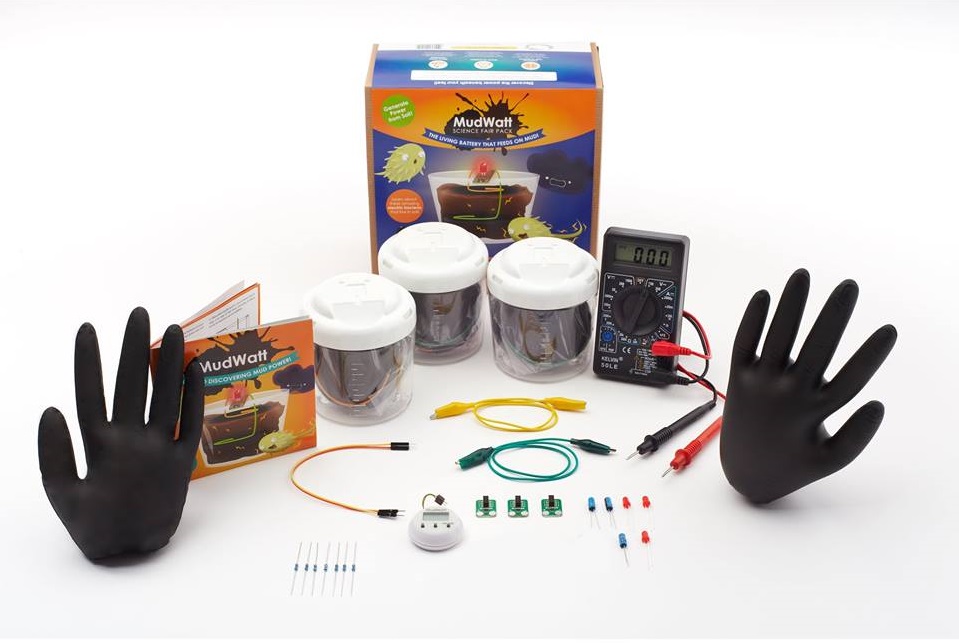MudWatt Makes Clean Energy from Mud
Childhood friends Keegan Cooke and Kevin Rand grew up with a shared love of science and experiments. As adults, they went their separate ways — Cooke worked in the fields of laser physics, genetics, and microbial fuel technology, while Rand tested rocket propulsion systems, worked in product design, and earned his master’s in mechanical engineering with a concentration in energy systems. Now, the buddies have parlayed their passions into their own company, Magical Microbes, and hope to spark scientific interest and curiosity in the next generation of kids while promoting clean energy.

Through their “MudWatt” kit, Cooke and Rand are showing kids how to harness their love of playing with mud to generate electricity. Yes, mud. It’s a down-and-dirty way to make science fun and practical.
The award-winning MudWatt kit contains everything young scientists need to create their own “bio-energy pet.” In other words, they will be building a fuel cell that runs on muddy microbes. The kit’s designers explain: “MudWatt engages kids in STEM in a whole new way, using the power of electricity-generating bacteria living in the soil beneath our feet!” When people (while it’s fun for kids, it’s cool for learners of all ages) use MudWatt with the accompanying MudWatt Explorer app, the device can become “a long-term experimental platform for learning about microbiology, decomposition, nutrient cycling, soil chemistry, biochemistry, and electrical engineering.”
Unlike other science-experiment kits, the MudWatt can be reused for years. It’ll generate power until it runs out of microbes, and then you just need to throw in some more!

We were especially impressed by the “Educator Resources” section of the MudWatt site. It includes NGSS (Next Generation Science Standards) curriculum modules for teachers to use alongside the MudWatt in the classroom, as well as a helpful round-up of funding sources for STEM programs. The “Meet the Microbes,” “Electricity and Circuits,” and “Soil Ecology and Nutrient Cycling” modules each convey a different set of core ideas and provide step-by-step instructions for activities, so students can immediately convert their newfound knowledge into hands-on action.

Since the MudWatt requires electrogenic (electricity-generating) microbes to function, the budding scientists’ first challenge will be to find the best sources of them. Luckily, there are plenty of readily-available options, from soil and sediment to the food in the fridge. Of course, trial and error will help pinpoint the best fuel sources.

The MudWatt’s energy output depends on the microbes it’s given and how its electrodes are positioned. “We encourage users to think about what microbes would like to eat and to design their own fuels using soil and whatever they find in their refrigerator,” the MudWatt team says. “With standard topsoils and with an electrode distance around 4 centimeters, typical power levels are around 50 microWatts.”

The company’s scientists readily field questions online, and they encourage users to post the results of their experiments to share with other MudWatt-ers. To make things even better, the team also shares assembly tutorials to help with set-up.
The MudWatt kit is available in a “classic” version, but there’s also a “Science Fair” kit and a “Classroom” kit, both of which were designed specifically for school use. Accessories and replacement parts are also easy to pick up.




